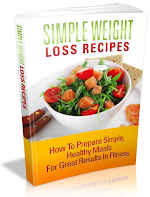Decoding Food Labels: A Guide to Smart Choices for Weight Loss
 |
| Decoding Food Labels: A Guide to Smart Choices for Weight Loss |
Decoding Food Labels: A Guide to Smart Choices for Weight Loss
Introduction
Embarking on a weight loss journey involves more than just controlling portions and exercising regularly; it necessitates a keen understanding of the food you consume. This guide is your key to unlocking the mysteries of food labels, empowering you to make informed choices that align with your weight loss goals. From deciphering nutritional information to navigating common pitfalls, consider this your roadmap to achieving a healthier and happier you.
Chapter 1: The Basics of Food Labels
1. Understanding the Serving Size:
Dive into the importance of recognizing serving sizes on food labels. Shed light on how seemingly healthy options may have smaller serving sizes, influencing overall calorie intake.
2. Cracking the Nutritional Facts Panel:
Break down the nutritional facts panel, dissecting information on calories, fats, carbohydrates, proteins, and other key nutrients. Provide insights into the daily value percentages and their significance for a balanced diet.
3. Ingredients List Demystified:
Explore the ingredients list and its hierarchical nature. Highlight how ingredients are listed by weight, emphasizing the significance of placing greater scrutiny on items appearing at the beginning of the list.
Chapter 2: Navigating Macronutrients
1. Fats: The Good, the Bad, and the Ugly:
Unravel the complexities of fats, distinguishing between saturated, unsaturated, and trans fats. Guide readers on identifying sources of healthy fats while being wary of hidden trans fats that can negatively impact cardiovascular health.
2. Carbohydrates: Beyond Simple vs. Complex:
Dissect the carbohydrate section, delving into the nuances of simple and complex carbohydrates. Provide tips on choosing whole grains and fiber-rich options to support sustained energy levels and satiety.
3. Proteins: Quality Matters:
Highlight the importance of high-quality protein sources and discuss how protein intake plays a crucial role in weight loss by promoting muscle retention and satiety. Guide readers on discerning between complete and incomplete protein sources.
Chapter 3: Deciphering Added Sugars and Sweeteners
1. Identifying Hidden Sugars:
Educate readers on the various names used for added sugars that may disguise their presence. Offer practical tips on spotting hidden sugars in seemingly healthy products like yogurt, granola bars, and condiments.
2. Natural vs. Artificial Sweeteners:
Navigate the landscape of sweeteners, distinguishing between natural alternatives and artificial sweeteners. Discuss their impact on weight loss, debunk common myths, and provide recommendations for moderation.
Chapter 4: Sodium, Fiber, and Micronutrients
1. The Sodium Dilemma:
Discuss the role of sodium in our diets and how excessive intake can contribute to water retention and bloating. Offer practical strategies for reducing sodium intake while maintaining flavor in meals.
2. The Fiber Advantage:
Highlight the weight loss benefits of dietary fiber, emphasizing its role in promoting fullness and supporting digestive health. Guide readers on choosing fiber-rich foods to enhance their weight loss journey.
3. Micronutrients for Overall Wellness:
Stress the importance of essential vitamins and minerals for overall health and well-being. Encourage readers to consider the micronutrient content of foods as part of their weight loss strategy.
Chapter 5: Unveiling Marketing Tricks
1. "Low-Fat" and "Diet" Deceptions:
Expose common marketing tactics used on food labels, particularly the "low-fat" and "diet" labels. Empower readers to look beyond these claims and scrutinize the entire nutritional profile.
2. Misleading Portrayals of Health:
Navigate through misleading terms like "natural," "organic," and "gluten-free." Equip readers with the discernment to differentiate between genuinely nutritious options and those capitalizing on health-oriented buzzwords.
Chapter 6: Practical Tips for Smart Label Reading
1. Create a Personalized Food Label Cheat Sheet:
Guide readers on creating a personalized cheat sheet with go-to reference points for their specific dietary preferences and restrictions.
2. Meal Planning with Labels in Mind:
Provide insights into integrating label reading into meal planning. Emphasize the role of conscious food choices in achieving weight loss goals.
Chapter 7: Strategies for Weight Loss Success
1. Caloric Density and Weight Loss:
Dive deeper into the concept of caloric density, emphasizing its role in weight loss. Explain how choosing foods with lower caloric density can lead to greater satiety, allowing for a more satisfying and sustainable weight loss journey.
2. Balancing Macronutrients for Optimal Results:
Provide advanced insights into macronutrient balance. Discuss the importance of aligning protein, fats, and carbohydrates to individual needs and goals for enhanced weight loss results.
3. Timing and Frequency of Meals:
Examine how the timing and frequency of meals influence the process of weight loss. Discuss the benefits of spreading meals throughout the day and incorporating nutrient-dense snacks to maintain energy levels and control cravings.
Chapter 8: Mindful Eating Practices
1. Mindful Eating as a Weight Loss Tool:
Examine the principles of mindful eating and its impact on weight loss. Encourage readers to cultivate a mindful approach to meals, savoring each bite, and paying attention to hunger and fullness cues.
2. Emotional Eating and Strategies for Coping:
Address the complex relationship between emotions and eating. Provide practical strategies for recognizing emotional triggers, developing alternative coping mechanisms, and fostering a healthier relationship with food.
3. The Role of Stress and Sleep:
Discuss the interconnectedness of stress, sleep, and weight loss. Highlight how managing stress levels and prioritizing adequate sleep contribute to overall well-being and support successful weight loss efforts.
Chapter 9: Incorporating Physical Activity
1. Synergy of Exercise and Nutrition:
Explore the synergistic relationship between physical activity and nutrition for weight loss. Discuss how combining a well-balanced diet with regular exercise can optimize results and improve overall health.
2. Choosing Exercises for Weight Loss:
Guide on selecting exercises that specifically support weight loss goals. Discuss the effectiveness of both cardiovascular and strength training exercises in achieving a healthy and sustainable weight.
3. Making Exercise Enjoyable:
Encourage readers to find joy in physical activity. Offer tips on discovering activities that align with individual interests, making exercise a pleasurable and integral part of their weight loss journey.
Chapter 10: Overcoming Common Challenges
1. Social and Peer Influences:
Address the impact of social and peer influences on dietary choices. Provide strategies for navigating social situations, making mindful decisions, and communicating personal goals to friends and family.
2. Dealing with Plateaus:
Acknowledge the inevitability of plateaus in weight loss journeys. Offer insights into overcoming plateaus through reassessment, adjusting strategies, and maintaining patience and perseverance.
3. Celebrating Non-Scale Victories:
Shift the focus from scale-related victories to non-scale achievements. Encourage readers to celebrate improvements in energy levels, mood, physical fitness, and other aspects that contribute to a holistic sense of well-being.
Chapter 11: Sustaining Weight Loss and Long-Term Success
1. Transitioning to Maintenance:
Guide readers on transitioning from active weight loss to maintenance. Discuss the importance of recalibrating caloric needs, maintaining healthy habits, and embracing a sustainable lifestyle for long-term success.
2. Nutritional Periodization:
Introduce the concept of nutritional periodization, emphasizing the adaptability of dietary strategies based on changing goals and circumstances. Guide on adjusting nutritional approaches to meet evolving needs.
3. Staying Engaged and Motivated:
Offer practical tips for staying engaged and motivated throughout the weight loss journey. Discuss the role of setting new goals, seeking support, and continually finding joy in the process.
Conclusion
As you navigate the intricacies of weight loss, remember that it's not just a destination but a transformative journey. By integrating these advanced strategies into your approach, you are not only embracing a healthier lifestyle but also fostering a sustainable relationship with food and fitness. With each chapter, you've equipped yourself with a comprehensive toolkit for lasting success. Here's to your continued journey, health, and well-being!
Check Out The Delicious Smoothie Diet: 21 Day Rapid Weight Loss Program
👇
________________________________________________
Ancient Japanese Discovery Melts 54 LBS Of Fat
The Custom Keto Diet | Your Personal Keto Custom Plan
Nature's Secret for Healthy Blood Sugar. Weight Loss
The Delicious Smoothie Diet: 21 Day Rapid Weight Loss Program
Powerful New Formula To Support Healthy Weight Loss
The Secret For Healthy Weight Loss
Healthy Weight Loss As Pure As Nature Intended


















0 Comments